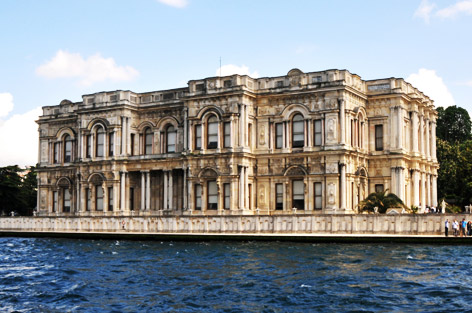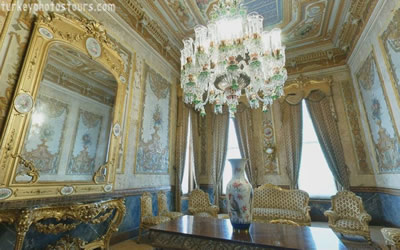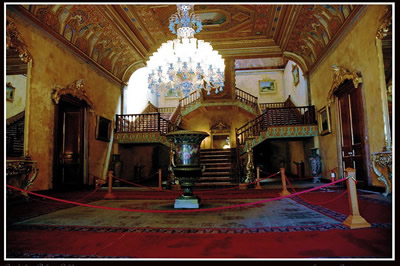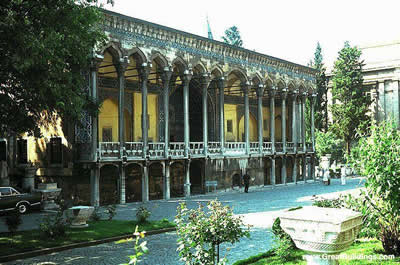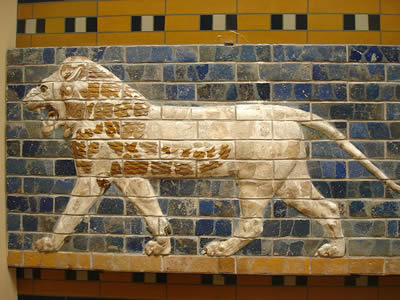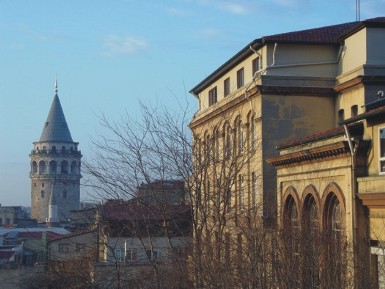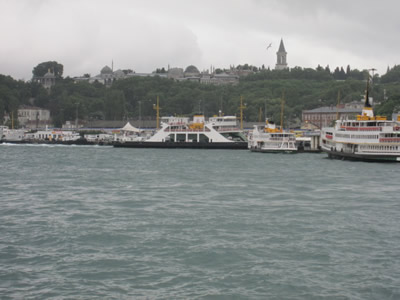
Classic Turkey trip, 2012
ISTANBUL III:
Beylerbeyi Palace & Museum of Archeology
HOME :
turkey trip Istanbul I Istanbul II Istanbul III Istanbul IV Bursa Troy Pergamum Sardes - Pamukkale Aphrodisia Ephesus Priene Didyma MiletCapitels
| We started our sightseeing day with a visit to the Beylerbeyi palace. The name means palace of the Lord of Lords (or something like that) and was built as the summer residence of Sultan Abdülaziz in 1861-65 . After the Republic of Turkey was founded it became the permanent home of the (abdicated) last sultan. | ||||
The royal gate - former palace entrance |
The summer palace from the Bosphorous
|
One of the rooms in the palace ornately decorated for the visit of the French empress Eugenie. |
||
| Both the Dolmabahce palace (the main residence of the Sultan) and the Beylerbeyi palace were built and decorated in the European style, a major departure from the interior of the Topkapi palace. However, as can be seen from the left picture of the huge marble fountain in one of the principal reception rooms, some traditional turkish elements were retained. Unfortunately, when we visited the fountain was dry. Too bad, it surely must have looked beautiful when running! Below left a picture of one of the reception rooms in the palace, | ||||
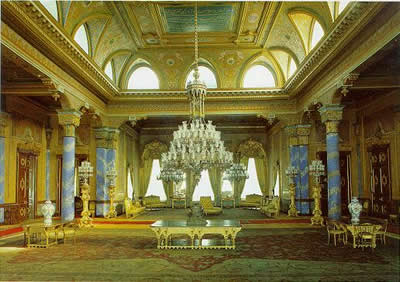 |
The elaborately decorated staircase |
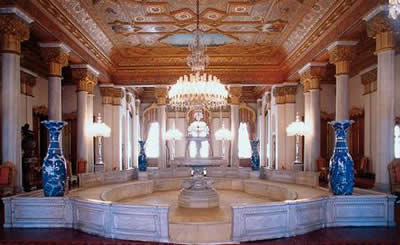 |
||
| He spent his time in the palace with woodcarving. Below left a picture of the last Sultan's rather simple bedroom. In the middle a dining room with chairs carved by the last sultan, a picture of one of the two bathing pavilions (one for ladies, one for gentlemen) is on the right. | ||||
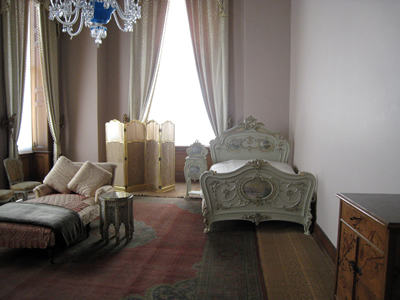 |
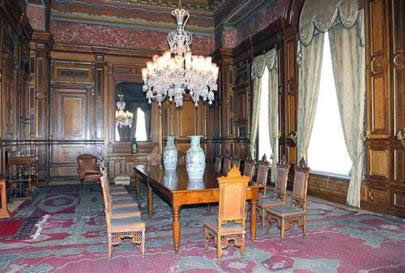 |
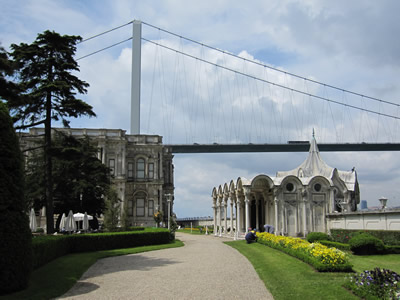 |
||
| As can be seen from the picture in the middle, the palace is located on the Asian side of the Bosphorus with an excellent view of Istanbul. After he abdicated the last sultan lived here in a form of house arrest and he located his principal rooms to view the land side so he would not have to look out on what he had lost. | ||||
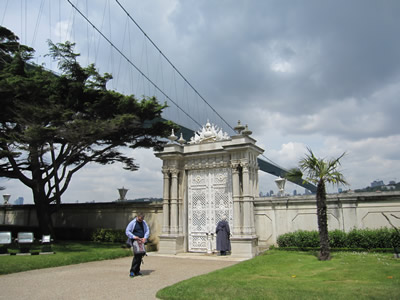 |
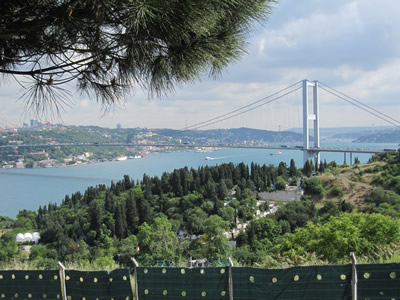 |
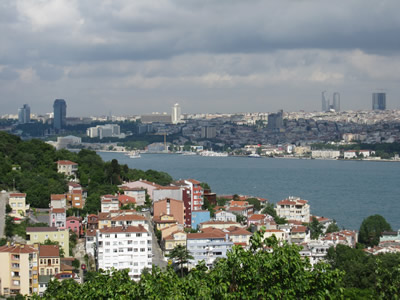 |
||
| The palace has a very nice, although fairly small garden The peaceful beauty of the palace grounds is unfortunately marred by the sight (and sounds) of one of the major bridges crossing the Bosphorous. Of curse, it did not exist when the Sultans still ruled their empire. | ||||
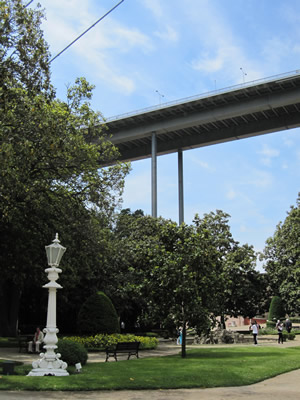 |
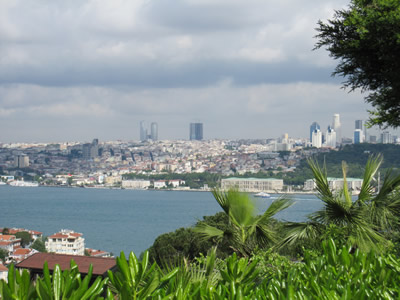 |
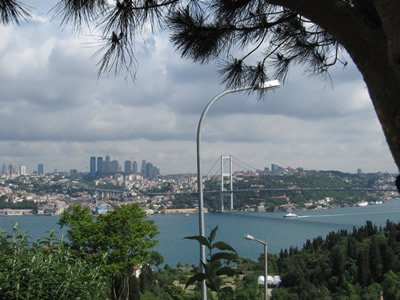 |
||
| View of Istanbul from a restaurant on a high bluff on the Asian side return to top | ||||
The Archeological Museum of Istanbul was our second stop for the day.
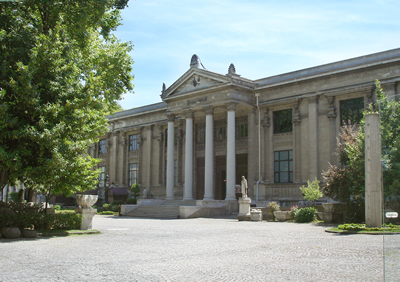 |
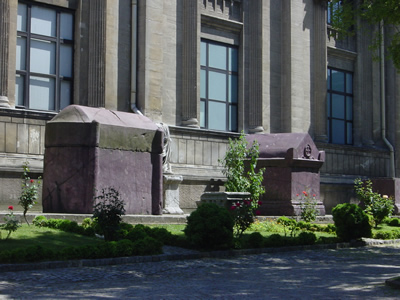 |
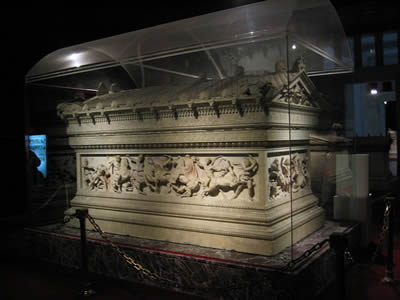 |
||
| The facade of the museum, designed to resemble archaic sarcophagi fronts | In front of the museum stands a collection of stone sarcophagi in which the Byzantine emperors had been buried | Above the elaborately decorated sarcophagus of Alexander the Great, below a statue of him. | ||
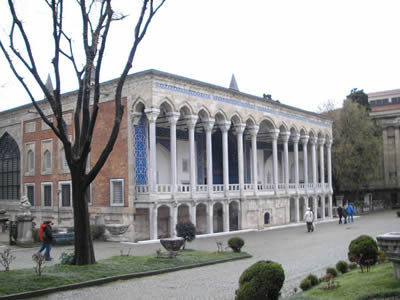 |
|
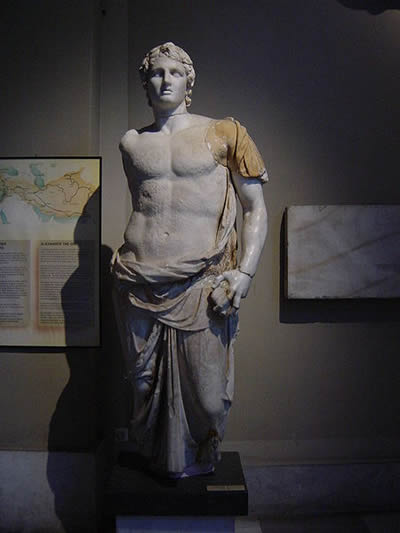 |
||
| Above are two views of the Tiled Kiosk. It was built by the Ottoman Sultan Mehmed II as a pleasure palace or kiosk in 1473. It was also called Glazed Kiosk (Sırça Köşk). Kiosks (garden pavillions) were very popularin Persia, India and the ottoman empire. The modern word kiosk came from it. It is located in the outer parts of Topkapi palace, across from the main entrance of the Archeological Museum. Today it contains the museum's Islamic art collection. Two particularly interesting examples of the treasures contained in the Tiled Kiosk's collection are shown below: | ||||
| In the middle picture one of three copies of the Kadesh Peace Treaty (1258 BCE), signed between Ramesses II of Egypt and Hattusili III of the Hittite Empire written in Akkadian, using cuneiform script. The peace treaty was also recorded in Egyptian hieroglyphs, which can be seen in Karnak and other sites in Egypt. It is the oldest known peace treaty in the world, and a giant poster of this tablet containing the treaty is on the wall of the United Nations Headquarters in New York City. | 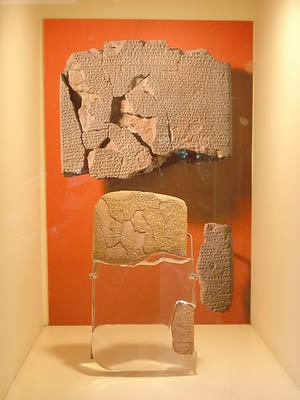 |
A mosaics fragment of Babylon's Ishtar gate - not all of the Ishtar gate is in Berlin! |
||
Our last visit of the day was to the German School of Istanbul. The Almani Lisei (German School) was founded in 1868 and is today a highly regarded co-educational school for both German and Turkish students. It is located in the Beyoğlu section of Istanbul, near the Galatatower. Entrace is based on a highly competitive exam and completion of the curriculum enables the students to attend universities in either Turkey or Germany. During World War I 54 students volunteered for the war effort. All of them died on March 8th at Gallipoli. The school clocks are still stopped at the time of their death at 3:45 pm. However, we were there to visit with a local architect (of course an alumni of the school). We had a very interesting conversation with him, ranging from a discussion of current building styles and codes in Istanbul and in Turkey in general as well as a free ranging discussion of the current political environment in the country. |
Above a picture of the school, on the left the Galata tower return to top |
|||
|
Our day concluded with a lovely dinner in a restaurant underneath the Galata bridge. Not only did we enjoy a view of the ferries on the Asian side of the Bosporous, we also could watch fishermen pulling out their catch of the evening. I do not know if our fish came from right outside the restaurant, but if so I assume we all were immune to whatever might be in the water since none of us had any bad reactions and we all could board the bus the next morning to cross into Asia to visit the towns (or rather ruins) of ancient Greece and Rome. return to top |
|||

